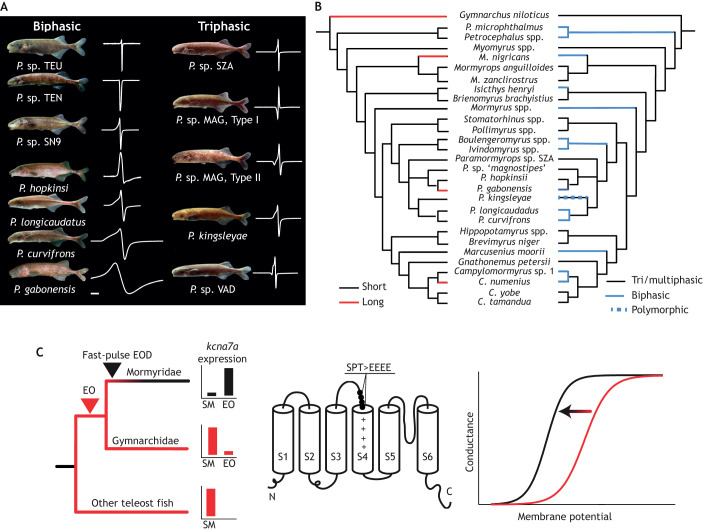Fig. 2.
‘Shallow convergence’ illustrated by weakly electric fish. (A) A sympatric assemblage of weakly electric mormyrid fish from the Ivindo River (genus Paramormyrops). This genus exhibits high morphological similarity, but substantial diversity in EOD signals, particularly in the number of phases present in the EOD (all EODs on the left are biphasic, all EODs on the right are triphasic) as well as the duration. Scale bar: 1 ms. (B) The evolution of EOD duration (left, red and black) and number of phases (right, blue and black) is superimposed upon the most recent phylogenetic tree proposed by Sullivan et al. (2000). It is evident that there have been numerous transitions between long and short EOD waveforms as well as simple and complex EOD waveforms. (C) The duplicate genes kcna7a and kcna7b encode the Kv1.7 potassium channel, and both are ancestrally expressed in SM. kcna7a expression shifts to the EO at the transition between Gymnarchus and other mormyrid fish, along with a burst of molecular evolution. Specifically, the substitution of negatively charged amino acids at the S3–S4 linker (SPT>EEEE) causes a shift in Kv1.7 voltage sensitivity at more hyperpolarized potentials, leading to brief action potentials. A was adapted from Picq et al. (2019 preprint) and C from Swapna et al. (2018).

